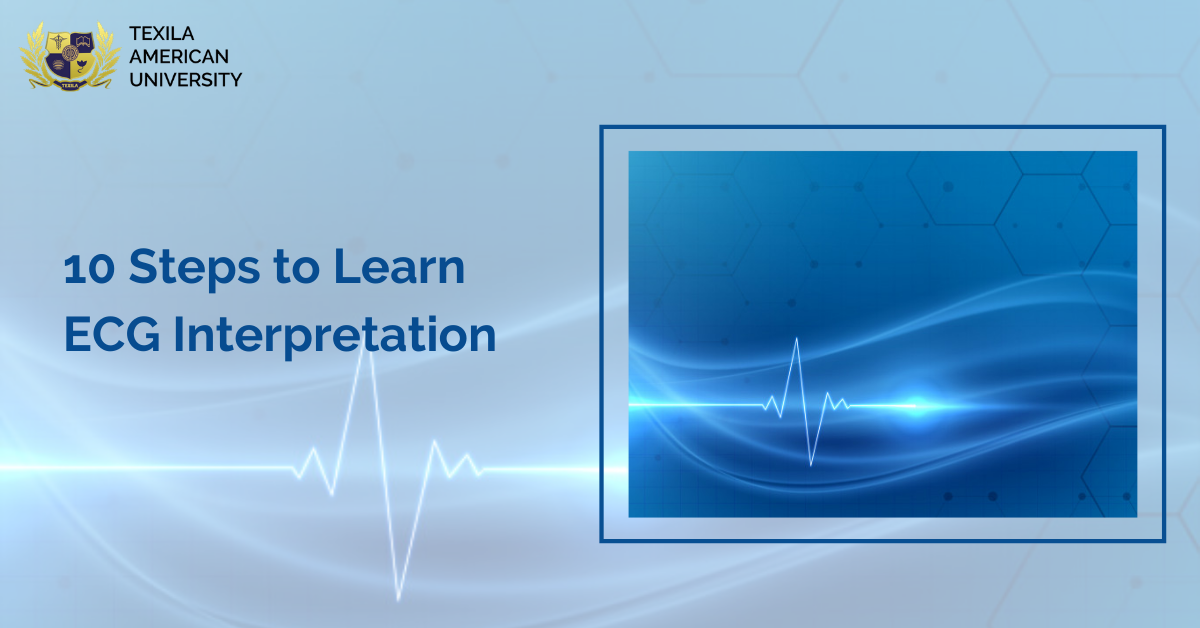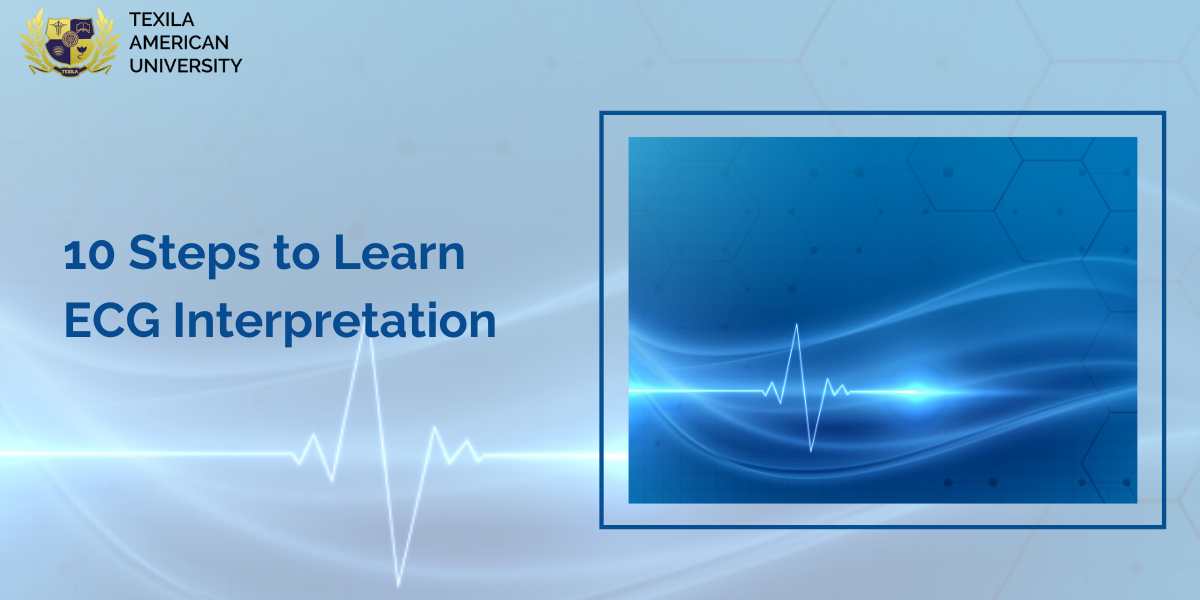Skills and not mere degrees or qualifications are playing a vital role in building a successful career. Honing new skills and keeping yourself abreast with the changes in your field of practice is the driving factor to success. The ECG interpretation course in the Medical field is no exception.
Suppose you are in the allied fields of medicine and eager to be constantly updated about the technological advancements in your sphere. In that case, Certification in ECG interpretation can come in handy to excel in your career.
The current surge in pandemic cases worldwide has put massive pressure on medical practitioners, particularly doctors and nurses. Suppose the allied medical professionals are also well equipped with the medical practices and skills possessed by Doctors. In that case, they can relieve doctors from the tremendous pressure they face to handle health emergencies. In this context, certification courses like ECG Interpretation will be more helpful.
This Post explores Certification in ECG interpretation by focusing on steps to complete this course and provides career opportunities that open up once you complete this course.
What is ECG interpretation?
As you are aware, ECG means Electro Cardio Gram. It is an essential tool to measure the health condition of your heart. As a Medical practitioner, you all should know the methods of reading the crest and troughs of an ECG graph. Most importantly, you should know to interpret the graphs produced by the ECG machine.
Though this blog post is not training material on interpreting these ECG graphs, here is a list of waves an ECG interpretation practitioner will analyze to report on the health of our hearts.
ECG interpretation practice
Broadly ECG waves comprise four contours:
- P-Wave
- PR interval
- QRS complex
- PR Segment
The P-Wave depicts atrial depolarization or activation
The PR interval is the distance from the starting point of the P-Wave to the starting point of the QRS complex. The PR interval is used to determine whether the impulse between the atria to the ventricles is normal.
PR segment is a flat line between the P-wave and starting point of the QRS complex. It can detect slow impulse conduction through the atrioventricular node.
As an ECG interpreter, analyzing these parameters in an ECG graph is expected from you.
Steps to Learn in ECG Interpretation
Here is an outline of the approach to ECG interpretation:
-
- Firstly, test whether the rhythm is regular. Use the QRS segment to determine if the ventricle depolarization is regular. If you notice any irregularities in the previous step, diagnose any abnormalities associated with CHAPS- chest pain, hypotension, altered mental state, poor perfusion, or shortness of breath.
- Measure the Heart rate. Obtain a six-to-ten radial pulse and multiply for one-minute reading. Using this reading, determine any heart ailments exists.
- Next, diagnose P-waves. Find out whether the P-waves are upright in position on the cardiac monitor along with the QRS segment. If all three are within normal limits, the electrical impulse began in the SA node.
- Determine the P-R interval. Find out the time interval between the P wave and the onset of the QRS segment. A normal PR-interval lies between 0.12 to 0.20 seconds. If any abnormality indicates blockage through the AV node.
- Measure the QRS segment. A regular QRS segment follows the following pattern: 1) A negative wave (Q wave), 2) A positive wave above the isoelectric line ( R wave), and 3) a negative wave after the positive wave called (S wave). If this pattern is missing with a time duration of 0.04-0.10 seconds, then a bundle branch block is diagnosed.
- Observing the T wave. A T-wave indicates recovery or repolarization of ventricles. It should occur after the QRS segment and should be upright in Lead- II. Note down any T wave variations. Variations may be due to lack of oxygen to the heart (Inverted T wave); peaked T waves indicate an excess of potassium. Flat T wave and raised ST segment indicate a lack of potassium.
- Observe Ecotopic Beats. Any change in the regular heartbeat pattern is a concern. Ectopic beats are aberrations from the normal heartbeat. Any ectopic pattern should be carefully monitored by observing if they are premature atrial contractions (PAC), premature junctional contractions (PJC), or premature ventricular contractions (PVCs). In addition, note down how many ecotopic beats exist in an ECG, the interval of occurrence, shape, and if they appear in groups or solitary patterns.
- Identify the Origin. The origin of rhythm is a crucial detrimental factor. Here are the vital factors to be considered:
- Sinus: 60-100 bpm; regular rhythm; P waves upright, round, and present before each QRS segment; normal PR interval; normal QRS duration.
- Atrial: Rhythm can be regular or irregular; normal QRS segment, but P waves premature and occur in various shapes like flattened notched, peaked, inverted, or hidden.
- Junctional: Observe a junctional type P wave. They can be inverted before, during, or after the QRS segment that is normal in duration.
- Ventricular: Wide and peculiar QRS segment and no P waves since the impulse originates below the SA node.
- Paced rhythm: Monitor the low voltage pacer spikes before the QRS segment.
- Recognize the rhythm diligently. From steps 1 to 8, you have analyzed the ECG patterns. Now it is time to recognize the rhythm and map it to the chief complaints the patient is expressing, mental status, OPQRST/SAMPLE histories, and vital signs. Based on this decision about the treatment plan should be taken.
- Keep up to date about any new developments happening in the sphere of ECG monitoring and interpretation.
A graduate certificate in ECG Interpretation
Texila American University (TAU) Group has universities in Guyana, South America, Zambia, Southern Africa. The university offers full-time, part-time, distance & online courses in various health science, business management, information technology, etc. Nearly 5000 students from 80+ countries are getting educated from this renowned university.
Texila’s Center for Professional Development (CPD) courses were incepted in 2015 to teach skills through short-term courses for working professionals as per the needs of their professions. TAU offers well-researched online courses that strictly adhere to Bloom’s Taxonomy. The course material of the university is available for life-long access to the students.
TAU offers different online medical certification courses. A graduate certificate in ECG Interpretation or ECG interpretation online course is the most sought-after course. The course is of 3 months duration and offers the best possible flexibility. The essential highlights of the course:
- Flexible online learning platform enabling you to learn at your own pace.
- Interactive live webinars to enhance your knowledge by sessions with faculty members
- Multiple Choice Questions based assessment at the end of the course.
- Total Learning duration 20 Hrs learning + 10 Hours webinar
- The course fees – 300 USD.
- 65% of certified professionals have got tangible benefits from the course.
- 22% have received promotions or pay hikes in their careers.
Summary
Providing working professionals the skills needed in their work atmosphere to meet the daily challenges they come across in practice is the chief aim of Texila’s Center for Professional Development (CPD) courses. ECG interpretation online course or Certification in ECG Interpretation enables the medical practitioners to hone the skills needed to read and interpret ECG graphs.
This blog post has compiled ten steps of the ECG interpretation course in a simple to understand style. The TAU certification course is affordable, and medical practitioners can widely benefit from the course to excel in their careers. You, as Medical Practitioners, can reap the benefits of certification courses offered by TAU. Happy Learning!!!


